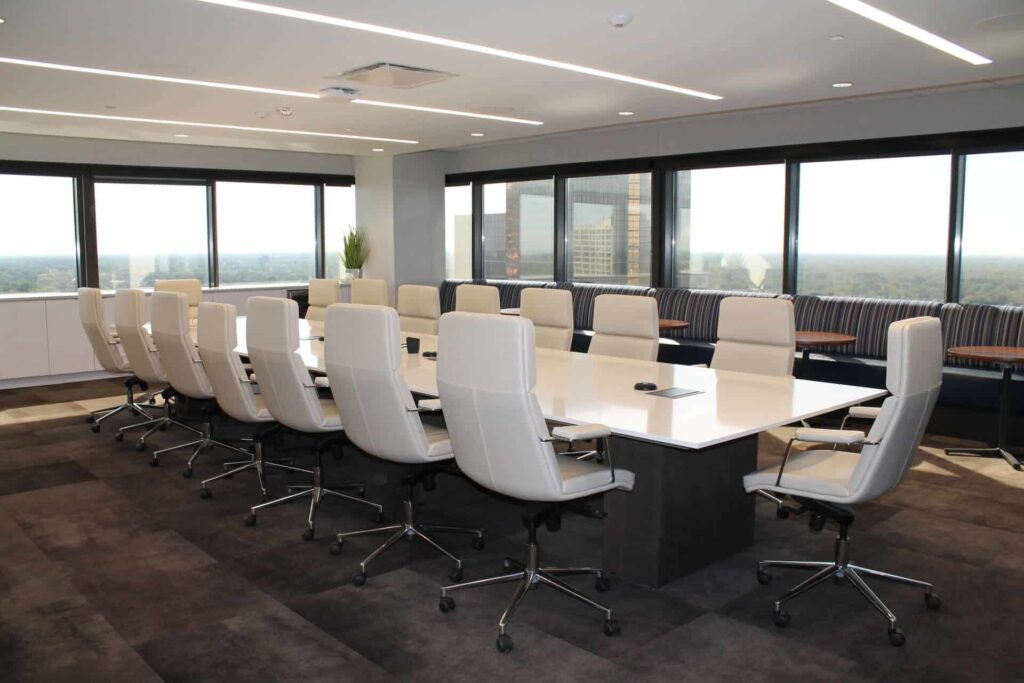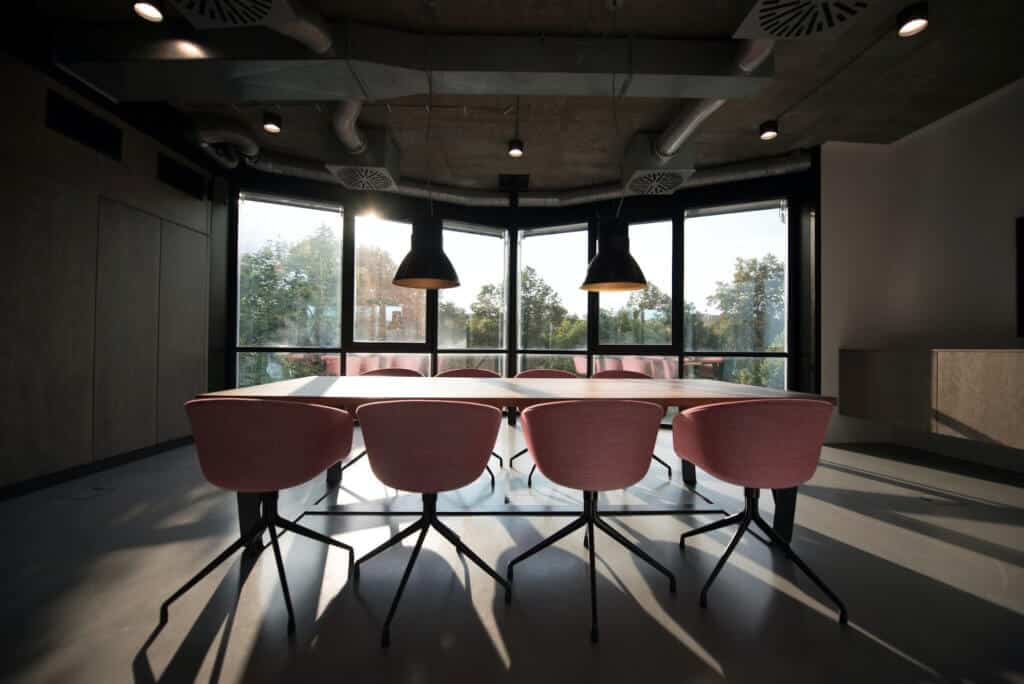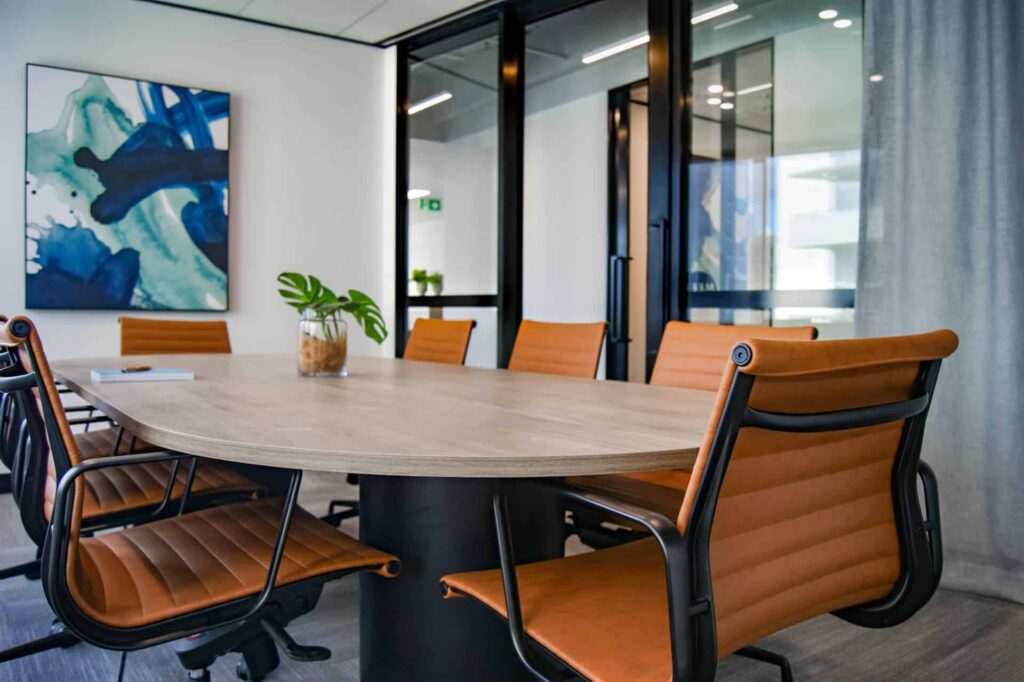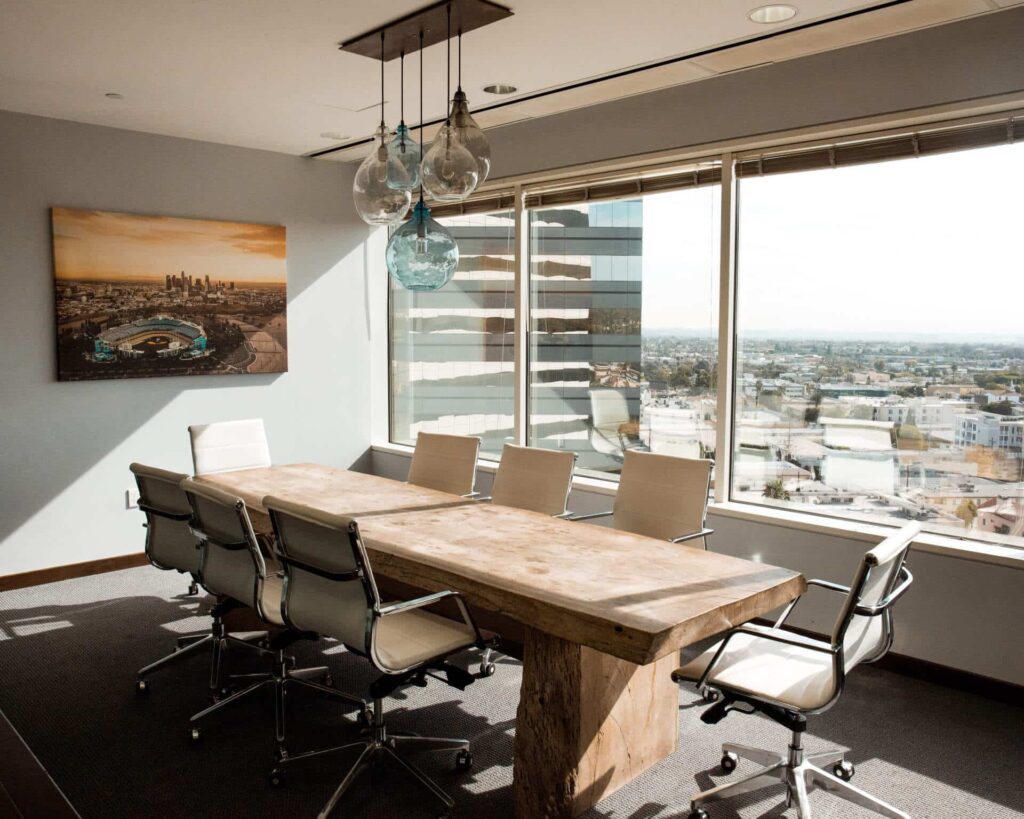Meeting room booking software is a necessity for the post-pandemic office.
Companies have always needed systems in place to schedule meetings and book collaborative spaces. But along with rapidly changing the nature of work, COVID-19 has also changed the nature of office spaces.
As companies pivot to more flexible work environment types, the office is more and more becoming a space where hybrid workers mostly come for teamwork and meetings.
Companies will therefore need a robust meeting room booking system that includes detailed reporting and analytics. This way facility managers (FMs) can track how people are actually using collaborative spaces day-to-day. Ensuring it’s easy for everyone to book rooms makes life easier for employees and FMs alike. It also allows for better space utilization.
In the following article, we will explore meeting room booking software. We’ll look at how and why to use it in our ‘new normal’. We also review best practices and integrations that can make it more effective for everyone.

What is meeting room booking software?
Room booking software is space management software that extends traditional room booking systems. It is much like desk booking, except instead of booking just a desk, staff can book an entire meeting room. As such, it lets workers find and reserve the right meeting rooms, conference rooms, and other collaborative spaces. They can do this based on information like a space’s location on a floor plan or its proximity to the attendees.
Ideally, this software should also allow for complete meeting room management. It provides key data that FMs can use to optimize room usage, streamline workflows, and inform real estate decisions.
This software could also integrate with a company’s existing Integrated Workplace Management System (IWMS). This makes it possible to see all room availability at a glance. It’s easy to schedule and reschedule meetings at a moment’s notice.
In short, the right booking solution for a company should augment capabilities that exist in current calendaring systems. It should also streamline space booking needs for employees in a hybrid workplace.

Why use meeting room booking software?
At its most basic level, meeting room booking software makes it easy for employees to book collaborative spaces in real time.
Even before the pandemic, employees could spend up to 30 minutes a day looking for meeting spaces.
Now, with the explosion of new hybrid work models, more and more companies are adopting practices that blend remote and in-office work. As such, in-office work is now often reserved for collaborative work—i.e.: meetings, big and small.
According to OfficeSpace CEO David Cocchiara (or “Coach” as we like to call him), “the office is becoming more of a destination. Employees don’t go there just because they have to be there. They go because there’s something they’re trying to accomplish. Whether that’s collaboration with another team or within their team, planning, reviews, brainstorming and similar activities.”
This new, constantly changing way of using the office adds a level of complexity that just can’t be successful using simple sign-in sheets or Excel. To maintain functionality and understand how people are actually using their meeting spaces in a post-pandemic office, FMs need scheduling solutions with better tracking and contact tracing.
Using good conference room booking software can streamline and optimize this process. It can improve the functionality of not only the booking system, but the entire office as well.
Specifically, this type of room scheduling software offers the following key benefits:
Less Wasted Time
Unproductive meetings already cost businesses an estimated $37 billion a year.
Now, with the need for socially distant meetings, along with teams that are more likely to regularly be working independently, booking space can be even more of a hassle for workers.
When employees and FMs are consumed with the ‘how’ of booking meeting spaces, the ‘why’ of the meeting—i.e.: the actual work—can get lost in the weeds.
On the other hand, when room booking is intuitive and available on any device or platform, you can check on room status and book in seconds. This results in much less wasted time and resources, and a much better employee experience.
Less Wasted Space
When meeting room booking software keeps track of how employees are using workspaces, FMs can identify inefficiencies in the office.
If an office neighborhood tends to book unnecessary conference rooms, it could be a sign they need more reliable hot desking space.
Or if a meeting organizer is able to see that all invitees have booked desks in the same area, they won’t need to also book a separate conference room.
This added level of support can be especially useful when managing hybrid workplaces, especially those that are driven by concerns about real estate, i.e.: the desire to have less people using in-office seats and conference rooms.
Ultimately, reports and analytics that provide real-time data on actual meeting use can help FMs make much better decisions. Both when planning their workspaces, now and into the future. Among other benefits, this has the potential to dramatically reduce wasted space and therefore real estate costs.

Post-pandemic conference room booking best practices
It always makes sense for FMs to follow certain online booking best practices. Like making clear policies, offering a variety of layouts and workspaces, simplifying wayfinding, and ensuring employees have the necessary tools to do their best work.
And hopefully employees already show consideration for their coworkers by only reserving what they need, adhering to check-in times, respecting the privacy of others, and leaving any desks or meeting rooms clean and tidy for the next person.
Now that we are returning to a post-pandemic office, there are critical new best practices for any room booking system. Namely, FMs will have to ensure that both safety and visibility remain top of mind going forward.
Safety and visibility
First, conference room social distancing will be necessary. FMs will therefore need to determine the maximum occupancy of shared meeting spaces. Also, they will need to continually monitor social distancing in all rooms. Software tools like Visual Directory® and virtual floor plans can help FMs or employees quickly see the dimensions and maximum occupancy of shared meeting spaces. This way, people cannot book rooms beyond safe capacity.
Second, like OfficeSpace VP of Product and Strategy Luke Anderson explains in a recent interview on office booking software for the new hybrid office, employees will need greater visibility in being able to quickly identify and book available rooms, as well as to avoid double booking.
“Moving to a flexible workplace is a big change,” says Luke. “It’s also a two-way street. If you want employees to adopt a flexible model, you have to make sure you have information to support them.”
Finally, with today’s far-flung and often remote teams, it’s more important than ever for this software to be easily accessible everywhere. That means room booking software should be available on desktop and mobile devices (mobile apps on both iOS and android). It should also be available on touch screen kiosks in-office.

Integrations
Finally, no one enjoys learning how to use new software. To be truly user friendly, room booking software needs to meet employees ‘where they are.’ This means good conference room booking software will integrate with whatever systems your team already relies on.
For example, when Slack is integrated with your IWMS, you can use it to book both desks and conference rooms.
According to Scott Moitoza, Senior Director of Real Estate and Facilities at Procore, “Slack is a critical tool for every employee at Procore, so the fact that OfficeSpace integrates with Slack has saved our workforce a huge amount of time. The /find command has been critical for helping 2100 employees around the world find company resources and get from A to B.”
OfficeSpace’s robust API and webhooks make it easy to build custom integrations like this.
It integrates effortlessly with Google Calendar, Slack, MS Teams, Microsoft Outlook, and Zoom, among many others.
It also integrates with Google’s G-suite meeting room booking system and Outlook’s Office 365 room booking system.
Seamless integrations like this save time and help employees stay productive, making better offices for everyone.
“Employees love OfficeSpace’s Slack integration,” says Jamie Kinch, VP of Real Estate and Workplace Experience at Rapid7. “It makes it so easy for them to find their colleagues and conference rooms in such a large office, especially after a big move to a new building.”
What is a meeting room booking system?
Meeting room booking software is straightforward: it’s the digital tool companies use to help employees find and book rooms.
A meeting room booking system, on the other hand, is the complete model. And philosophy that dictates how that booking system should work.
No matter what your meeting room booking system, OfficeSpace has booking software that can be tailored for your needs. Contact us to learn more.
Photos: Damir Kopezhanov, Danielle Cerullo, Nastuh Abootalebi, S O C I A L . C U T, Dane Deaner




